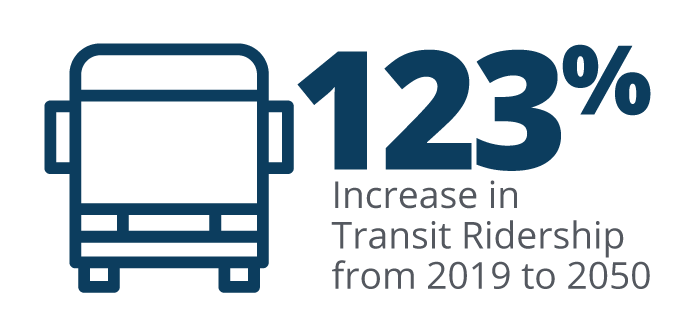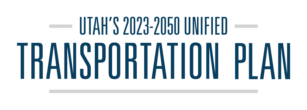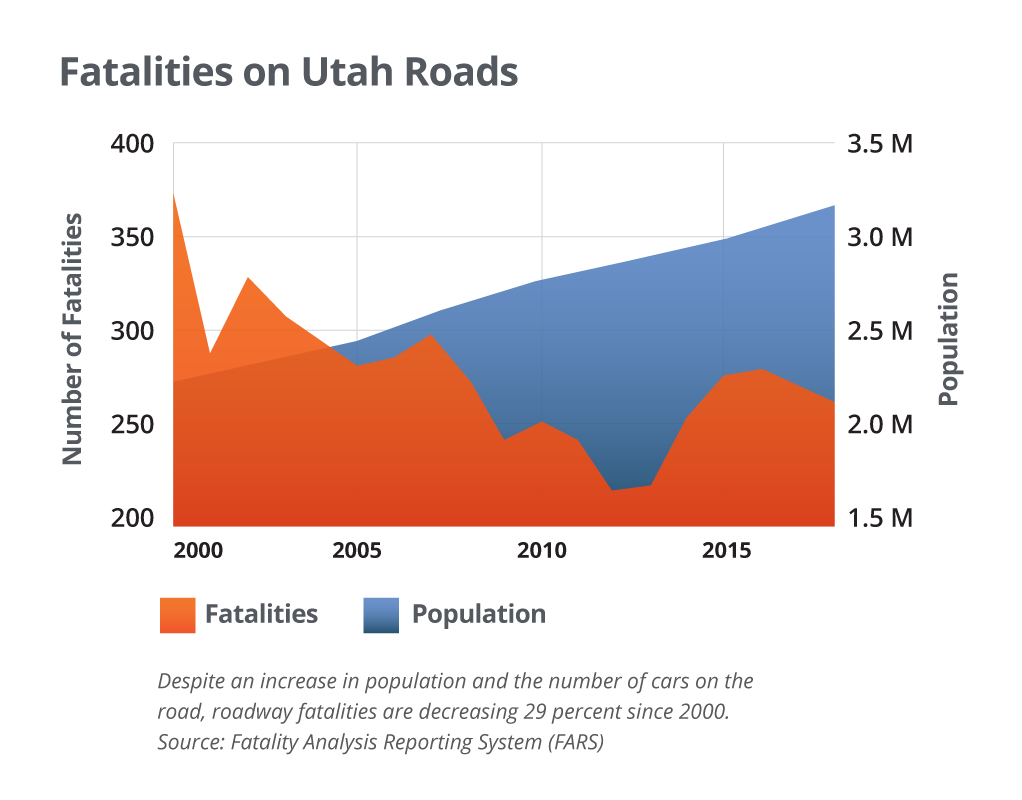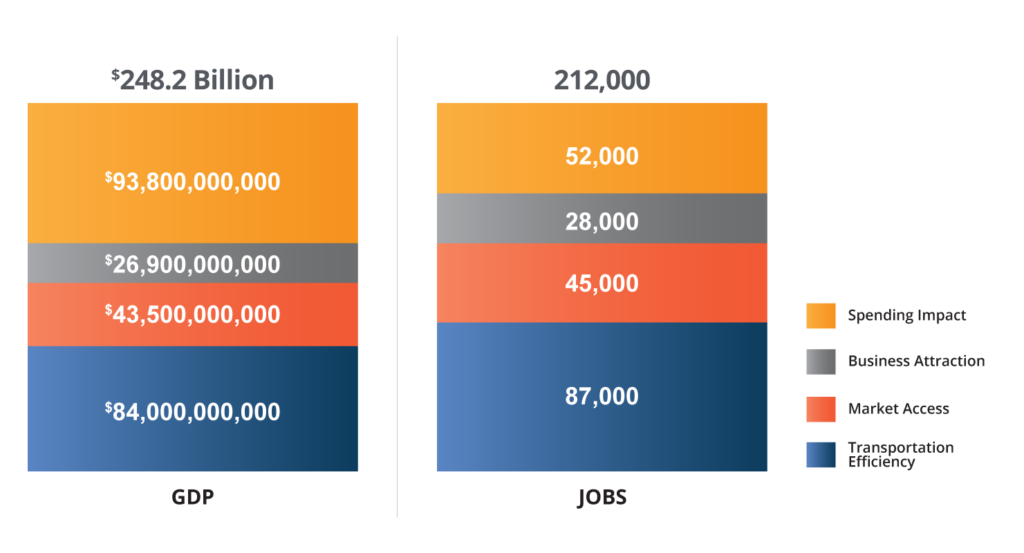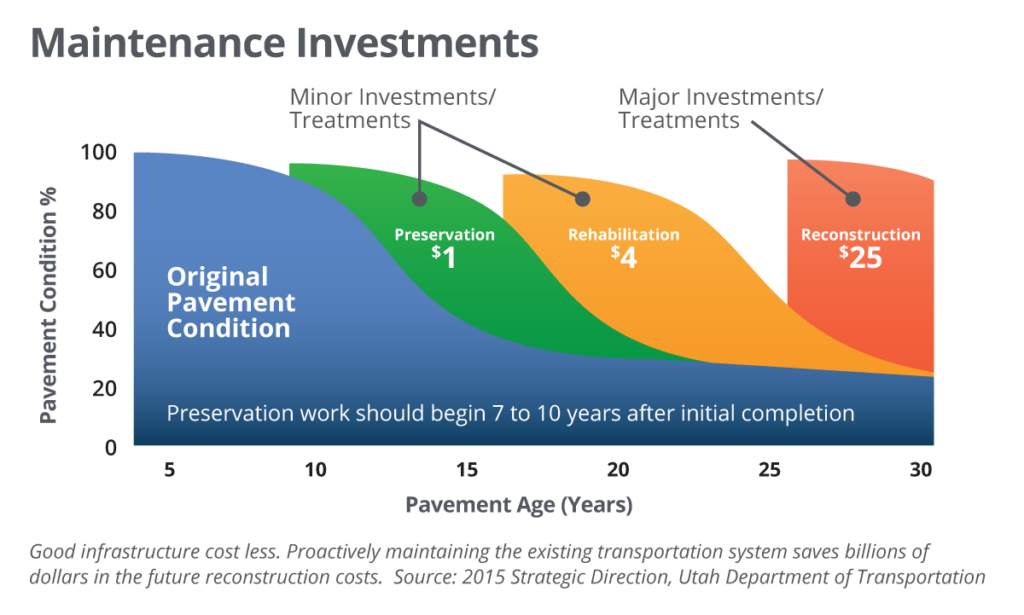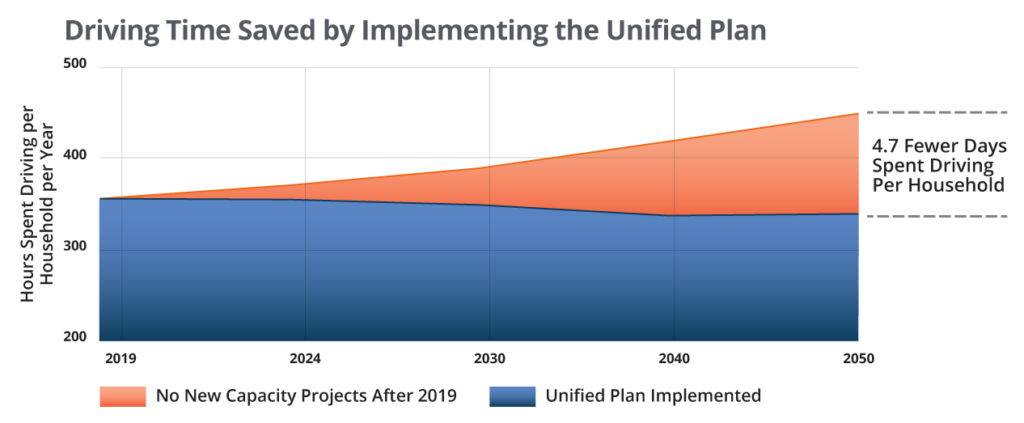Benefits of the unified plan
Applying Utah’s “Secret Sauce” in creating and implementing past Unified Plans have yielded tremendous benefits to our state. The following performance measures show the outcomes when we work in collaboration.




Safety
Fatalities on Utah roads have decreased substantially even with significant population growth. The Unified Plan partners support the goal of Zero Fatalities. One life lost is one too many. Planning for improvements to the transportation system can improve safety for drivers, cyclists and pedestrians.
Goal: Reduce fatal and serious injuries on the transportation network. Data shows that since the year 2000, there has been a 29% reduction in traffic fatalities.
Economic Vitality
A well-functioning transportation system is the backbone of a robust economy. It connects people to jobs and other destinations and facilitates the efficient movement of goods and services within communities and across the state.
An economic analysis commissioned by WFRC, MAG, UDOT, and UTA in 2019 found that investing in the 2019-2050 Unified Plan would more than double the return on investment for every dollar spent.
The analysis found that implementing the Unified Plan will result in nearly $248.2B in total GDP increases in Utah’s economy in 2050. This number includes nearly $93.8B from the construction sector, and over $84B created by efficiencies in the transportation system. Over $43.5B can be attributed to enhanced access to markets for Utah companies, and $26.9B from new businesses relocating to Utah.
The analysis also found that implementing the Unified Plan will result in nearly 212,000 new jobs in Utah’s economy in 2050. This number includes nearly 52,000 construction jobs, and over 87,000 jobs created by efficiencies in the transportation system. Over 45,000 jobs are attributed to enhanced access to markets for Utah companies, and 28,000 jobs from new businesses relocating to Utah, in part because of a well-functioning transportation system.
Economic Impact Created by Unified Plan Investment
Job Access by Planning Jurisdiction
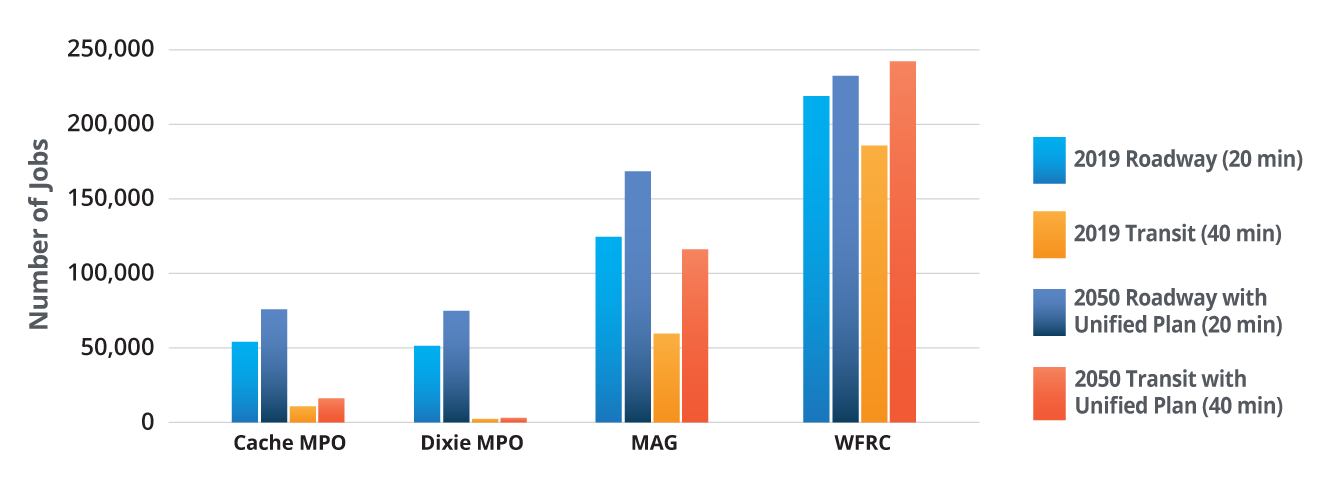
Air Quality & Environment
A transportation system that incorporates all modes of travel provides choices for how people get around. A balanced system reduces the number of vehicles on the road, consequently reducing emissions. In addition, advances in cleaner fuel and vehicle technology will significantly improve air quality.
Goal: Reduce emissions that adversely affect health, quality of life, and the economy.
Key mobile source ozone and PM2.5 emissions give us insight into the progress we are making. The goal is to attain a 54% reduction in mobile emissions statewide by 2050 as compared to today.
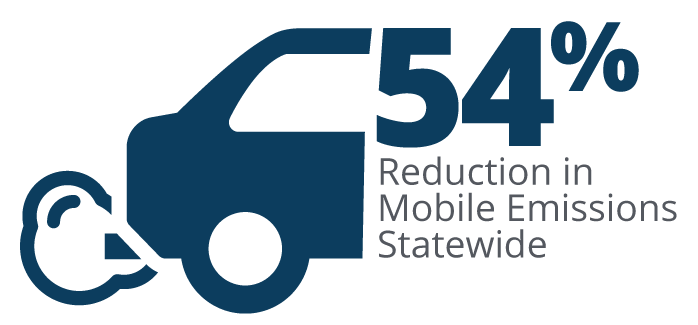
Planned New Miles of Active Transportation
| Planning Area | New Miles of Active Transportation |
|---|---|
| Cache MPO | 174 |
| Dixie MPO | 378 |
| MAG | 295 |
| UDOT/Rural | 226 |
| WFRC | 1,002 |
| Total new miles planned between today and 2050 | 2,100 |
| Source: MPO and Statewide Long-Range Transportation Plans |
Mobility
The issue of mobility in Utah is a factor that is important to everyone. Our communities are spread out and the ability to move about is a critical concern. There are 3 areas of focus for Mobility.
- Reduce vehicle hours of travel
- Increase the share of trips using non-single occupant vehicle model
- Improve reliability of system
Reduce vehicle hours of travel
By implementing the Unified Plan, the average Utah household will spend 4.7 fewer days driving each year. The savings from time spent driving is attributed to how the plan improves mobility with high efficiency road and transit projects and how it coordinates these transportation improvements closely with the land use surrounding them.
Increase in transit ridership
As part of the Unified Plan, we look at ridership as a measurement tool to help us reach the outcome of 123% increase in transit ridership from 2019 to 2050.
